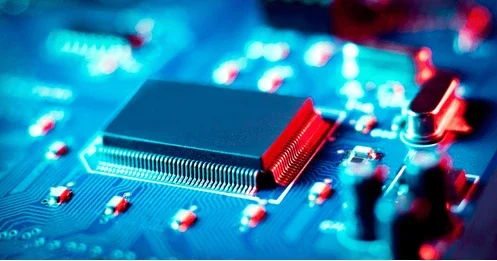VLSI (Very Large Scale Integration) design began its journey in the 1970s when engineers first packed thousands of transistors onto a single chip. This breakthrough enabled the first microprocessors (Intel 4004 had 2,300 transistors), replaced room-sized computers with portable devices and launched the era of Moore’s Law (doubling transistors every 2 years). It forms the technological backbone of today’s digital world, with growing demand driven by breakthroughs in artificial intelligence, IoT devices, and advanced computing systems. For those passionate about electronics, digital design, and creating impactful hardware solutions, a career in VLSI offers both intellectual satisfaction and excellent financial prospects in the thriving semiconductor industry.
Table of Contents

• Top 5 VLSI Skills Every Beginner Should Master First:
1. Build a Strong Foundation in Basics
Digital Electronics:
Digital Electronics is a core branch of electronics that deals with circuits operating on digital signals, where data is expressed in binary values (0s and 1s). It focuses on the design, development, and analysis of electronic systems that perform logical and arithmetic operations, making it essential for data processing, storage, and transmission.
From smartphones and laptops to digital home appliances and smart systems, digital electronics forms the backbone of modern technology, offering high performance, accuracy, and reliability in today’s fast-paced digital world.
Key Concepts:
1. Number Systems and Binary Logic
- Binary, Octal, Decimal, Hexadecimal
- Conversions between number systems
- Signed and unsigned numbers
- 1’s and 2’s complement
📌 Why it matters: All digital devices operate using binary data. Understanding number systems is the first step.
2. Logic Gates
- Basic gates: AND, OR, NOT
- Universal gates: NAND, NOR
- Exclusive gates: XOR, XNOR
- Truth tables and Boolean expressions
📌 Why it matters: Logic gates are the building blocks of digital circuits.
3. Boolean Algebra and Logic Simplification
- Boolean laws and theorems
- Karnaugh Maps (K-Maps)
- Simplifying logic expressions
📌 Why it matters: Helps design efficient circuits using fewer components.
4. Combinational Logic Circuits
- Adders and subtractors
- Multiplexers (MUX) and Demultiplexers (DEMUX)
- Encoders and Decoders
- Comparators
📌 Why it matters: These circuits perform specific functions without memory.
5. Sequential Logic Circuits
- Flip-Flops (SR, JK, D, T)
- Latches
- Counters and shift registers
- Finite State Machines (FSM)
📌 Why it matters: Sequential circuits are essential for memory and timing.
6. Timing Diagrams and Clock Signals
- Understanding clock pulses, edge triggering, and setup/hold times
📌 Why it matters: Crucial for synchronization and stable circuit design.
7. Memory and Storage Devices
- RAM, ROM, EEPROM
- Cache and registers
📌 Why it matters: Every digital system needs memory to store data and instructions.
8. Digital-to-Analog (DAC) and Analog-to-Digital Converters (ADC)
- Concepts of data conversion
- Resolution, sampling rate
📌 Why it matters: Interfaces digital systems with the real (analog) world.
9. Programmable Logic Devices (PLDs)
- PAL, PLA, CPLD, FPGA
📌 Why it matters: Learn how complex digital systems are implemented and customized.